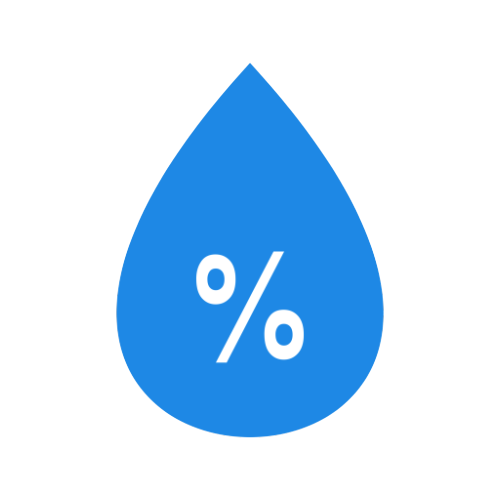PLANT CARE ( Schefflera Arboricola | Gold Capella | Dwarf Umbrella Tree ) BUY NOW
 |
Normal household conditions 15-24°C. Avoid draughts. |
 |
Best grown in bright, indirect light to partial shade. Insufficient light may cause leggy growth. |
 |
Moderate humidity above 60% |
 |
Water when the soil has become slightly dry. Water thoroughly and allow to drain freely. |
ADDITIONAL CARE
Schefflera Arboricola | Gold Capella | Dwarf Umbrella Tree Prune back if the plant becomes leggy or too tall. Pinch out new growth if you want to keep the plant small and compact. Wipe leaves occasionally to remove dust. Start with a good quality, commercial potting soil. These are usually lighter in weight than topsoil, sterile, and pest free. Many are available with mild starter fertilizer in the mix. Select a container with a drainage hole or be prepared to drill holes for drainage if there are none. Prepare the container by filling with potting soil up to 2” (5cm) from the rim of the planter. Remove the plant from its pot. Make a small hole in the soil slightly larger than the root ball either by hand or using a trowel. Insert the plant into the hole and press soil firmly around the roots and just covering the root ball. When all the plants are potted, water thoroughly to settle the soil and give plants a good start. Place plant in a reliably sunny location. Repot every 2 years in the same container or in a container slightly larger than the diameter of the roots.
Schefflera arboricola is a flowering plant in the family Araliaceae, native to Taiwan as well as Hainan.[1][2] Its common name is dwarf umbrella tree, as it resembles a smaller version of the umbrella tree, Schefflera actinophylla.
Description
It is an evergreen shrub growing to 8–9 m tall, free-standing, or clinging to the trunks of other trees as an epiphyte. The leaves are palmately compound, with 7–9 leaflets, the leaflets 9–20 cm long and 4–10 cm broad (though often smaller in cultivation) with a wedge-shaped base, entire margin, and an obtuse or acute apex, sometimes emarginate.[1][2] The leaves are leathery in texture, shiny green glabrous on the upper surface and somewhat lighter and matte on the underside. Young plants have smaller leaves and fewer leaflets. Each leaflet has a central rib that divides it into two halves, with between four and six ribs clearly visible up to the third order. The stipules merge with the petiole, the length of which is 12-15 cm.[3]
The flowers are produced in a 20 cm panicle of small umbels, each umbel 7–10 mm diameter with 5–10 flowers.[1] The flowering period extends from midsummer to early autumn. The flowers are hermaphroditic, having a colour ranging from yellow to green and a double perianth radial symmetry. They are composed of an entire annular calyx, five almost fully developed sepals, a corolla with five petals 2.5 mm long, with five stamens and five or six carpels that enclose the ovary. The style is not recognizable and the stigma is established.[2] The fruits have an almost spherical oval drupe, with a diameter of about 5 mm. Inside the endocarp contains five seeds. These fruits ripen from late summer to early winter and are initially glandular points of a colour that ranges from orange to red-violet at maturity.
Cultivation and uses
It is commonly grown as a houseplant, popular for its tolerance of neglect and poor growing conditions. It is also grown as a landscape plant in milder climates where frosts are not severe. Numerous cultivars have been selected for variations in leaf colour and pattern, often variegated with creamy-white to yellow edges or centres, and dwarf forms. The cultivar “Gold Capella” has gained the Royal Horticultural Society‘s Award of Garden Merit.[4][5]
Poisoning
Schefflera poisoning is due to the species containing “sharp” calcium oxalate crystals that are insoluble and damage the cells and tissues of the animals ingesting them. Depending on the amount that a pet consumes, the resulting damage (swelling) of exposed tissues and digestive tract may be fatal to the animal. For their own safety, children and household pets should be kept away from consuming this plant.
Due to the misuse and confusion of the common name “umbrella plant” or “umbrella tree” this species has been mistakenly included on many internet lists as “safe plants” for reptile keepers. The presence of oxalate crystals is a known issue and consumption can be regarded potentially serious as the calcium oxalate crystals can significantly damage liver and kidneys of the animals ingesting any part of this or related Schefflera species. Symptoms in pets can include: cardiac arrhythmia, diarrhea, vomiting, dilated eyes, difficulty swallowing, excessive drooling, hoarse barking, labored breathing, loss of appetite, numbness of exposed area(s), obstruction of the airway, pawing/rubbing at the face or mouth and the swelling of the tongue and lips.
Care
The plant prefers higher light if possible, but can adapt to a wide variety of light levels. As a tropical plant it likes moisture (and humidity), but avoid letting the plant sit in water after you water it. It likes to be moist but not wet so just let the soil dry out between watering.
Aerial roots
Under the right conditions, this plant will produce aerial roots that, when they reach the ground, will convert to fully functional roots. They give the plant an unusual and interesting appearance. Three conditions must be maintained for the plant to produce them: a high growth rate, insufficient trunk roots (the plant is root bound or these roots are pruned) and constant, very high humidity.



